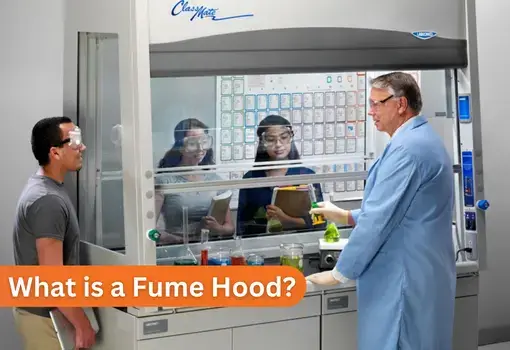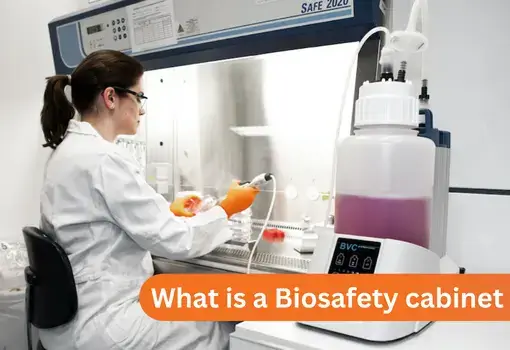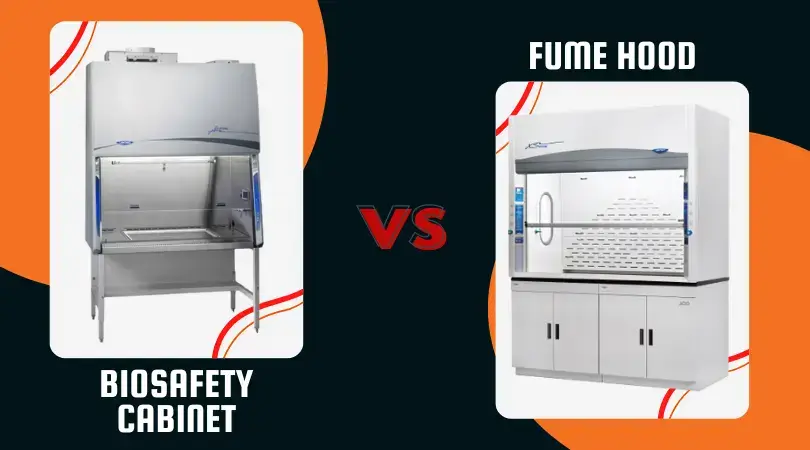The biosafety cabinets and fume hoods are laboratory equipment that uses airflow for safety and protection purposes in various laboratories.
Because their function is the same, people often use the terms biosafety cabinet or fume hood interchangeably, making them sound the same.
To help you identify and use the correct term for equipment, we have distinguished biosafety cabinets and fume hoods in this article.
What is a Fume Hood?

A fume hood is a ventilated enclosure that helps capture and remove hazardous chemical fumes, gasses, vapours and dust generated by chemical processes performed therein.
The fume hoods are the primary exposure control method in laboratories. It is specifically designed to ensure the safety of the user and other inhabitants of the laboratory.
What is a Biosafety Cabinet?

A biosafety cabinet (BSC) is another laboratory equipment that protects the user and the environment, but unlike fume hoods, these cabinets protect from pathogens and biological agents.
Distinguishing Biosafety Cabinet and Fume Hood
The table below differentiates between the two laboratory equipment:
| Fume Hood | Biosafety Cabinet |
|---|---|
| Protect the user from hazardous chemicals | Protects the user and the environment from biological agents |
| No HEPA filter | Must have HEPA filter |
| Exhaust air outside the building | Does not exhaust air outside the building |
| Vertical or horizontal or both | Vertical configuration |
Biosafety Cabinet Airflow
HEPA filtration is a common feature between the three primary classes of biosafety cabinets.
-
- Class 1 Biosafety cabinet: This type of cabinet draws air away from the laboratory worker and across the work surface. Though it protects the operator, it does not protect the product from the unfiltered room air that can enter the cabinet.
-
- Class 2 Biosafety cabinet: It draws air safely around the operator, flows under the work surface, and HEPA-filtered air flows down onto the work surface. Thus, protecting personnel as well as product and the environment.
-
- Class 3 Biosafety cabinet: these cabinets are gas-tight enclosures with intake and exhaust air passing through HEPA filtration. Class 3 cabinets also provide a physical barrier between the operator and the sample.
Fume Hood Airflow
As we already know, fume hoods are used to handle dangerous chemicals. Air is sucked away from the lab worker, starting at the equipment\’s face and moving across the work surface before being discharged and diluted into the atmosphere through ductwork.
To maintain uninterrupted airflow inside a fume hood, avoid storing bulky items that can obstruct the air passage.
Conclusion
The first step towards getting the proper laboratory equipment is knowing the type of protection you need. BSCs protect the environment, the user and the product, while fume hoods only protect the user against chemical fumes.




